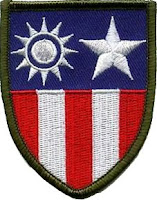Today's post will be another short one. As I scan most of literature stuff that I bought over couple of months I am sharing it here. With this post another thread starts - Princely States Gazettes covering war related news or articles.
Under British arrangement, most of princely states were granted permission to maintain law and order and run general affairs of their area on their own. As part of that most of princely states used to publish what is called state gazettes for general public consumption. It was kind of information sharing by the government to the people. The gazette not only served the purpose of publishing government policies, announcements and news but it also gave them control to restrict/censor the information to be distributed especially during war period. Even though , Radio/newspaper were available but very few people in India in those days could afford it. The gazettes also served as state propaganda at times encouraging people to donate to war funds, providing both true and fabricated news of Allies win and publishing advertisements to join allied forces.
 Shown above is a page from Jodhpur Government Gazette published on July 14, 1945. Since, it is already in English I thought I won't need to explain it but later I realized that it would be almost impossible to read it because of spacing problem in blog. So here it is:
Shown above is a page from Jodhpur Government Gazette published on July 14, 1945. Since, it is already in English I thought I won't need to explain it but later I realized that it would be almost impossible to read it because of spacing problem in blog. So here it is:
"The gazette shows a picture taken by a British Army photographer who accompanied a British patrol on a reconnaissance in Germany, shows members of the patrol approaching their objective. British troops on this front and in the Ardennes were issued with white camouflage cloaks. Guns, rifles and radios are all wrapped in white, with the good effort seen."
The uniqueness of this gazette is that it carries a photograph cyclostyled. Very few gazettes carried photographs as most of these gazettes were typed.
Even though the description on gazette doesn't mention explicitly but the troops here are of Indian origin or part of Indian regiments. There are couple of reasons to believe that. I have another such document where similar photographs are shown addressing them as Indian soldiers besides the photograph and statement is conveying the message that British Government has taken all precautions to ensure safety of soldiers by providing white camouflage, allaying concerns of families of soldiers and encouraging public to join forces.
Under British arrangement, most of princely states were granted permission to maintain law and order and run general affairs of their area on their own. As part of that most of princely states used to publish what is called state gazettes for general public consumption. It was kind of information sharing by the government to the people. The gazette not only served the purpose of publishing government policies, announcements and news but it also gave them control to restrict/censor the information to be distributed especially during war period. Even though , Radio/newspaper were available but very few people in India in those days could afford it. The gazettes also served as state propaganda at times encouraging people to donate to war funds, providing both true and fabricated news of Allies win and publishing advertisements to join allied forces.
 Shown above is a page from Jodhpur Government Gazette published on July 14, 1945. Since, it is already in English I thought I won't need to explain it but later I realized that it would be almost impossible to read it because of spacing problem in blog. So here it is:
Shown above is a page from Jodhpur Government Gazette published on July 14, 1945. Since, it is already in English I thought I won't need to explain it but later I realized that it would be almost impossible to read it because of spacing problem in blog. So here it is:British "Recce" Party in Germany
"The gazette shows a picture taken by a British Army photographer who accompanied a British patrol on a reconnaissance in Germany, shows members of the patrol approaching their objective. British troops on this front and in the Ardennes were issued with white camouflage cloaks. Guns, rifles and radios are all wrapped in white, with the good effort seen."
The uniqueness of this gazette is that it carries a photograph cyclostyled. Very few gazettes carried photographs as most of these gazettes were typed.
Even though the description on gazette doesn't mention explicitly but the troops here are of Indian origin or part of Indian regiments. There are couple of reasons to believe that. I have another such document where similar photographs are shown addressing them as Indian soldiers besides the photograph and statement is conveying the message that British Government has taken all precautions to ensure safety of soldiers by providing white camouflage, allaying concerns of families of soldiers and encouraging public to join forces.


























